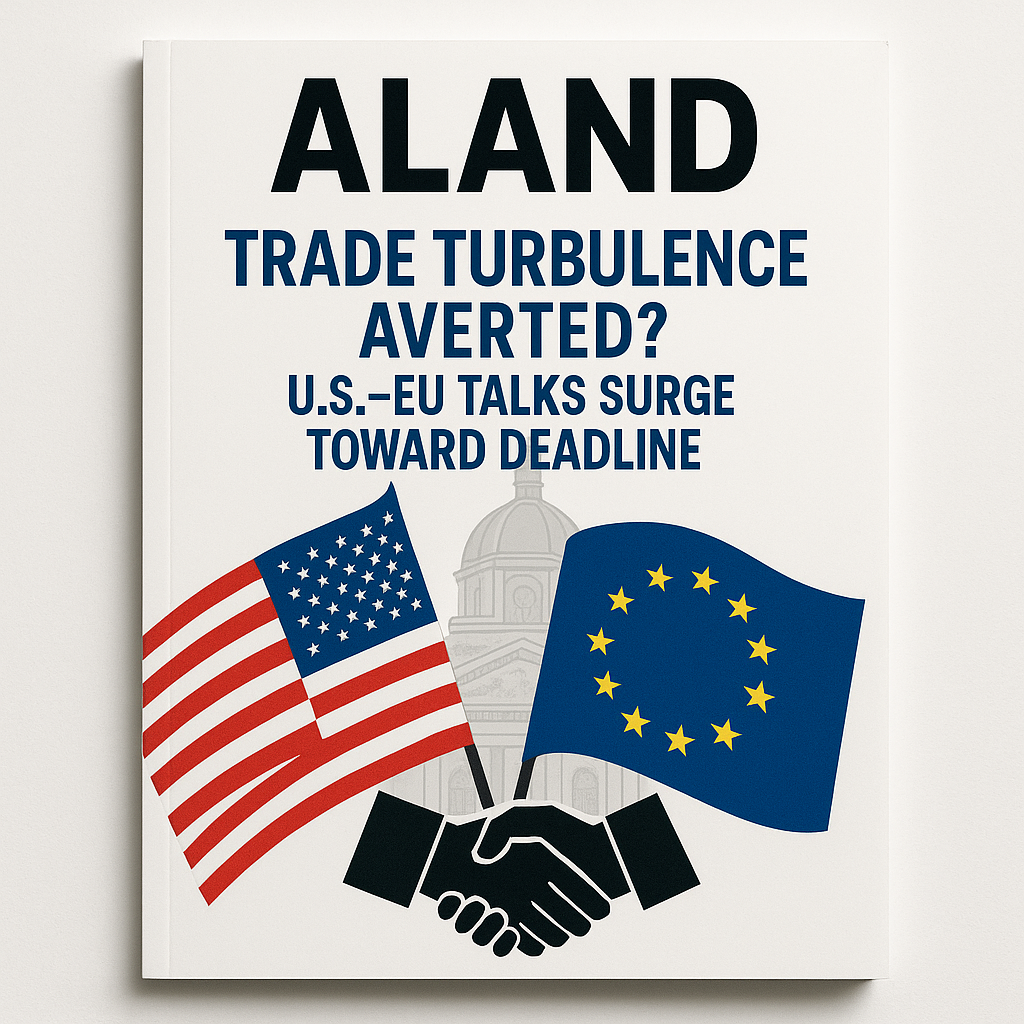Trade Turbulence Averted? U.S.–EU Talks Surge Toward Deadline
Published Date: 27th Jul, 2025
July 27, 2025
Negotiations between Washington and Brussels are heating up as both sides race to forge a trade agreement just days before a looming tariff showdown.
Deadline Drama: August 1 Ticking Clock
The United States has threatened to impose sweeping 30% tariffs on over 70% of European Union exports, including critical sectors such as steel, automobiles, and aluminum. With the deadline set for August 1, both parties are under intense pressure to finalize a deal that would avert a sharp escalation in trade tensions.
The expected compromise under negotiation is a reduction in tariffs to a more manageable 15% flat rate, offering relief to exporters and helping stabilize global markets.
In the Rush: Talks Accelerate
Since mid-May, discussions between EU and U.S. officials have gained pace. Brussels has fast-tracked its internal coordination, while U.S. negotiators have kept lines of communication open with near-daily consultations. A flurry of high-level meetings has taken place in recent days, culminating in an in-person summit scheduled in Scotland.
Make-or-Break Moment in Scotland
On July 27, President Trump and European Commission President Ursula von der Leyen met at Trump’s Turnberry estate in Scotland. This high-stakes meeting is widely viewed as the last opportunity to broker a deal before the August deadline.
President Trump has publicly rated the chances of reaching a deal as "50–50", underscoring the uncertain path forward.
Key Terms on the Table
Negotiators are working to finalize a number of elements, including:
-
A 15% flat tariff rate for most EU-origin goods
-
Potential exemptions for high-sensitivity sectors like aerospace, automobiles, and pharmaceuticals
-
Commitments from the EU to boost purchases of U.S. liquefied natural gas and increase direct investment in U.S. markets
Although much of the framework has been agreed upon, the scope and scale of exemptions remain unsettled.
Markets Brace and React
Investor confidence has edged upward in anticipation of a potential breakthrough. The trade agreement under discussion is modeled in part on recent U.S. deals with Japan and the United Kingdom, promising greater clarity and stability for manufacturers, exporters, and importers on both sides of the Atlantic.
Flashpoint: Retaliation Ready at $109 Billion
In the event talks collapse, the European Union is prepared to hit back. A detailed retaliation plan reportedly targeting $109 billion worth of U.S. exports is in place. Industries likely to be affected include agriculture, beverages, aviation, and consumer goods.
What’s Next: A 50/50 Gamble
Analysts suggest a short-term compromise—a fixed 15% tariff with targeted concessions—is the most probable scenario. However, long-standing trade disagreements persist. Both sides continue to seek expanded market access while protecting key strategic sectors.
Should this deal materialize, it could become the most comprehensive transatlantic trade agreement in recent years. Failure, however, would likely trigger a damaging tit-for-tat escalation, with ripple effects across global supply chains.
Bottom Line:
With just days remaining before the August 1 deadline, the outcome of the U.S.–EU trade talks remains uncertain. Whether the discussions in Scotland result in a deal or a breakdown will shape not only transatlantic commerce—but also the tone of global trade policy for the months ahead.
Date: 27th Jul, 2025

